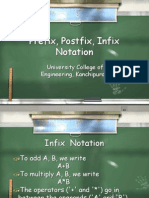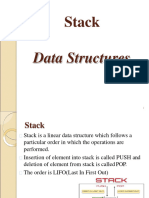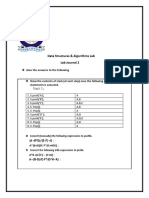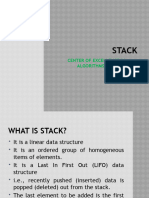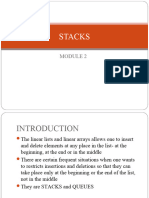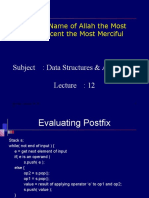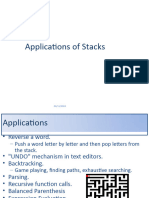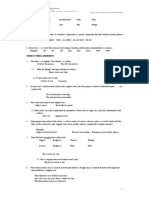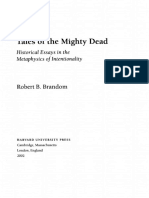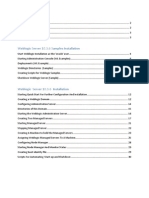0% found this document useful (0 votes)
34 views99 pagesUnit 5 Stack
The document covers the fundamentals of data structures, specifically focusing on stacks, which are LIFO structures used for various applications such as infix to postfix conversion, string reversal, and balancing symbols. It details the operations associated with stacks, including push, pop, and peek, as well as their implementation using arrays and linked lists. Additionally, it discusses the conversion processes between infix, postfix, and prefix expressions, highlighting the importance of these notations in eliminating ambiguity in operations.
Uploaded by
rathod.31.hrishiCopyright
© © All Rights Reserved
We take content rights seriously. If you suspect this is your content, claim it here.
Available Formats
Download as PDF, TXT or read online on Scribd
0% found this document useful (0 votes)
34 views99 pagesUnit 5 Stack
The document covers the fundamentals of data structures, specifically focusing on stacks, which are LIFO structures used for various applications such as infix to postfix conversion, string reversal, and balancing symbols. It details the operations associated with stacks, including push, pop, and peek, as well as their implementation using arrays and linked lists. Additionally, it discusses the conversion processes between infix, postfix, and prefix expressions, highlighting the importance of these notations in eliminating ambiguity in operations.
Uploaded by
rathod.31.hrishiCopyright
© © All Rights Reserved
We take content rights seriously. If you suspect this is your content, claim it here.
Available Formats
Download as PDF, TXT or read online on Scribd
/ 99


